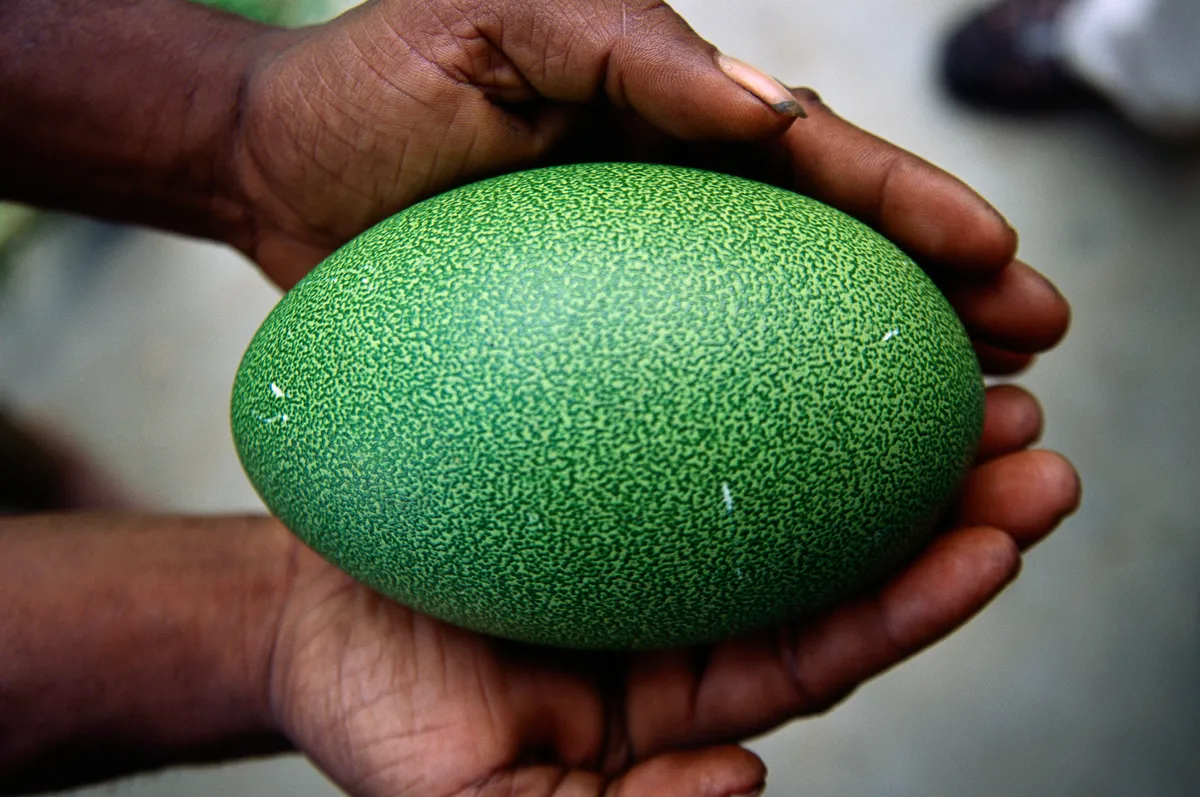1
Where does the name cassowary come from?
‘Cassowary’ originates from two Papuan words: ‘kasu’ (meaning horned) and ‘wari’ (meaning head). The name refers to the cassowary’s casque, a hollow structure made of keratin (similar to that making our hair and nails), found on the bird’s head.
The southern cassowary is also known as the double-watted cassowary.
2
How many species of cassowary are there?
There are three extant (living) species of cassowary:
- southern, Casuarius casuarius
- northern, C. unappendiculatus
- dwarf, C. bennetti
3
Where are southern cassowaries found?
Compared to the other extant species of cassowary, the southern cassowary is found in the southernmost parts of the genus’ range: northeastern Australia and south Papua New Guinea and Indonesia. The habitat of southern cassowaries is dense tropical rainforest.
4
What do southern cassowaries look like?
Southern cassowaries are prehistoric-looking birds with deep blue heads and necks, two bright red wattles (flaps of skin), a casque, and dense, long, black feathers. Reaching up to six feet tall, southern cassowaries are the third-tallest birds on Earth, after ostriches and emus of which they are related, and the second heaviest after ostriches. Females can weigh up to 76kg and are larger than the males who can weigh up to 55kg.

5
What do cassowaries eat?
Cassowaries are predominantly frugivorous, feeding on fruits that have fallen to the forest floor, but will predate on small vertebrates where available. The seeds of digested fruits are passed in the cassowary’s faeces and so cassowaries play an important role in seed dispersal.
Seeds of a rare Australian tree, Ryparosa sp., showed increased germination from 4% to 92% after passing through a cassowary’s digestive system. Read the paper in Functional Plant Biology.
6
Are cassowaries dangerous?
A typically shy and reclusive bird, cassowaries will, like most animals, become aggressive when threatened. They possess a sharp claw, up to 12cm in length, on the inner toe of each foot. When threatened, cassowaries will jump and strike with this claw, potentially resulting in lethal lacerations.
7
Can cassowaries fly?
Like ostriches, emus, rheas, and kiwis, cassowaries are ratites, flightless birds that possess a flat breastbone that is unable to support the muscles required for flight.
8
How do cassowaries communicate?
Cassowaries are typically solitary animals, but during the breeding season communicate through infrasonic booms (low frequency sounds below the range of human hearing). When in close proximity, cassowaries also communicate through subtle courtship behaviours, such as strutting in a circle, head shaking, throat and neck swelling, and high stepping to attract a mate.
Chester Zoo filmed their southern cassowaries' courtship and mating behaviour:
Please note that external videos may contain ads.
9
Are southern cassowaries endangered?
Estimates of the population size for the southern cassowary suggest that the population is larger than previously expected. The southern cassowary IUCN Red List categorisation, therefore, changed from Vulnerable in 2016 to Least Concern in 2018.
The population size of southern cassowaries, however, is decreasing. Threats to the species historically included habitat loss and fragmentation for residential, agriculture, and commercial development in its Australian range. In Indonesia and Papua New Guinea, southern cassowaries were historically threatened by hunting for meat.
Both dwarf and northern cassowaries are also listed as Least Concern.
10
Why are southern cassowary eggs green?
The greenish colour of southern cassowary eggs comes from biliverdin, a common pigment found in bird eggshells. As cassowaries are ground-nesting birds, the green colour of their eggs is used for camouflage against the surrounding vegetation in tropical forests to protect the eggs from potential predators.

11
When do southern cassowaries lay eggs?
The cassowary breeding season coincides with when fruit is most readily available: June to October. The female will lay around 4 eggs and then leave. The male takes sole responsibility for incubating the eggs and raising the brown and cream striped chicks.

Main image: Southern cassowary. © Marianne Purdie/Getty